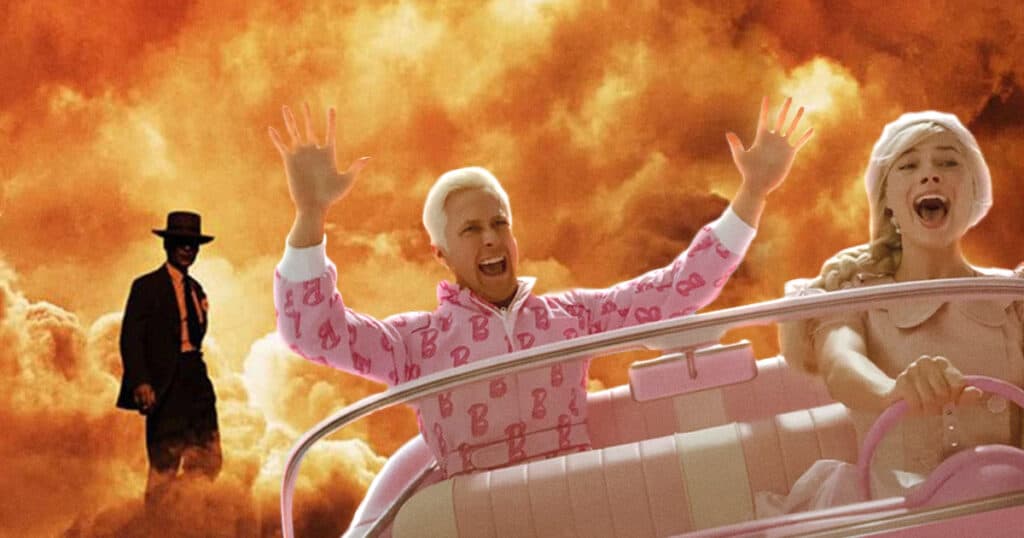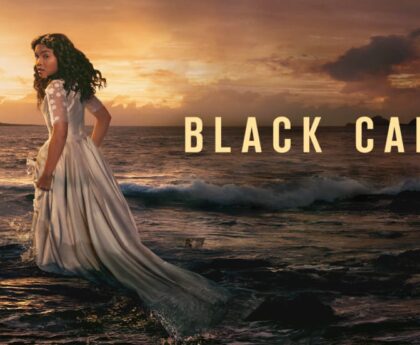Barbenheimer has captured the imagination of the internet, but it is not the first instance of a big-budget double bill in theaters.
This pop culture phenomenon has taken over film-obsessed corners of the internet, flooding social media platforms with reminders of the simultaneous release of two movies. You might even find your loved ones creating images of Edward Teller in vibrant colors or wearing T-shirts to commemorate the occasion. Barbenheimer, which refers to the release of Barbie and Oppenheimer on the same day, has become a dominant force, captivating movie enthusiasts.
The stark visual differences and distinct directorial styles of Barbie and Oppenheimer have made their simultaneous premiere on July 21 a fascinating topic of discussion. However, the concept of two big-budget films opening on the same day is not new. Throughout history, numerous prominent movies have dared to debut together, hoping that a rising tide at the box office will benefit both.
Big-budget double bills used to be much more common in the past. The modern practice of nationwide theatrical releases for big-budget American movies gained popularity in the 1970s, with films like Jaws leading the way. Back then, movies had longer theatrical runs, staying in theaters for months. This allowed big-budget features to coexist and thrive, even when opening on the same day. For example, in 1984, Gremlins and Ghostbusters both premiered simultaneously without affecting each other’s box office performance.
However, as the 21st century began, the home video market shortened the theatrical release window, making the opening weekend more crucial for a film’s success. Studios believed that less competition on opening weekend would increase a tentpole’s chances of making money. The notion of counterprogramming, where movies with different target audiences were released on the same day, started to fade. Blockbusters like Avengers: Endgame would open without any wide releases to compete against.
Nevertheless, there were still notable instances of Barbenheimer-style counterprogramming. Mamma Mia! opened against The Dark Knight in 2008 and turned out to be a box office powerhouse. Lincoln expanded into wide release alongside The Twilight Saga: Breaking Dawn (Part Two) in 2012, both achieving significant success. How to Train Your Dragon 2 and 22 Jump Street also premiered on the same day in 2014 and thrived by offering different experiences to moviegoers.
In recent years, studios have been hesitant to counterprogram against major blockbusters, focusing heavily on tentpole releases. This shift resulted in fewer opportunities for diverse movie offerings on the same weekend. The dominance of a few big movies led to a lack of counterprogramming and limited cinematic variety.
The Barbenheimer phenomenon resonates strongly with audiences because it harkens back to an earlier era when multiple big-budget movies could coexist on the same weekend. It reminds moviegoers of a time when there was more diversity in theatrical releases, offering a range of experiences. The return of big-budget double bills like Barbenheimer sparks hope for cinematic variety, breaking the monopolistic dominance of a single blockbuster.
While there have been previous instances of big-budget double bills, Barbenheimer stands out as a unique scheduling phenomenon that has inspired creative responses and evoked nostalgia. It continues a long tradition of theatrical programming, reminding us that cinema can offer different emotions and experiences.





